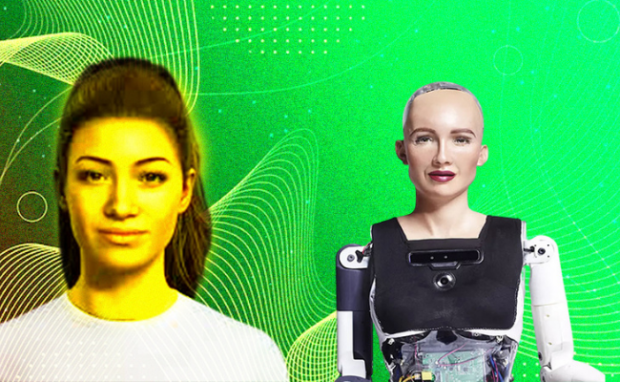China unveils ‘world’s first mass-produced humanoid robot’
China has been developing humanoid robots to solve its labor shortage and care for its growing elderly population. Fortunately, it seems the country is succeeding in this endeavor as its Fourier Intelligence company unveiled the “world’s first mass-produced humanoid robot.” This robotics marvel came after Huawei showed its humanoid bot last year.
Most focus on artificial intelligence tools like ChatGPT, but tech companies have been advancing other fields, too. Specifically, China has been creating humanoid robots that can perform manual labor for humans. Also, other companies have been developing similar machines so that we may have a robotic and AI-powered future soon.
This article will elaborate on the allegedly first-ever Chinese humanoid robot to enter mass production. Later, I will discuss other companies that have been developing two-legged machines.
What is the purpose of the world’s first humanoid robot?
China's Fourier Intelligence has designed a humanoid robot aimed at addressing the challenges posed by the country's aging population and shortage of caregivers pic.twitter.com/R1EiL4naT5
— Reuters (@Reuters) July 11, 2023
Euronews says the number of Chinese people over 60 will rise from 280 million to more than 400 million by 2035. In response, Fourier Intelligence and other Chinese firms are developing humanoid robots for healthcare facilities.
It unveiled its GR-1 prototype during the recent World Artificial Intelligence Conference in Shanghai. South China Morning Post says the bot can walk on two legs at 5km an hour while carrying a 50kg load.
The company started creating mundane devices like a smart exercise bike, a wireless robotic glove, and computer-guided machines that help people move their limbs again. However, founder Alex Gu told SCMP he had long dreamed of creating a humanoid bot.
In 2019, he pursued his dream despite most Chinese firms focusing on four-legged robots. “Many technologies used in rehabilitation robots are essentially applicable to humanoid robots,” Gu said.
“Humanoid robots require very good motors that are both powerful and light, and we are able to develop them ourselves,” the robot whiz added. It started to walk in 2022, marking a major milestone for Fourier.
“When we saw it standing up for the first time, untethered and walking around by itself, it was a big encouragement for all our engineers,” stated Gu. “It felt like raising a newborn baby.”
You may also like: NASA robot oversees oil rigs
The Chinese humanoid robot stands 1.64 m tall and weighs 55 kg. It can walk, avoid obstacles, and perform mundane tasks like holding bottles.
Co-founder Zen Koh said, “As we move forward, the entire GR-1 could be a caregiver, could be a therapy assistant, can be a companion at home for the elderly who stay home alone.”
“We can program it to sit, stand and jump. You can program the arms to pick up utensils and tools and perform tasks as the engineers desire,” he added.
What are the other humanoid robot projects?

Photo Credit: analyticsinsight.net
The Chinese humanoid robot is impressive, but there are many under development. For example, Xiaomi revealed its humanoid robot in 2022.
Founder Lei Jun calls it CyberOne. It can walk, but South China Morning Post says it can barely do other tasks. Meanwhile, another Asian country took a different approach to robotics by trying to attach them to people.
Researchers from the University of Tokyo created cyborg Jizai Arms to simulate how people react to having additional robotic limbs. They attached the cyborg arms to a backpack-like power system, which can fit four simultaneously.
Also, Jizai Arms mimicked human limbs and fingers. The researchers used this feature to control other people’s robotic arms. Believe it or not, they borrowed each other’s cyborg limbs to push this concept.
You may also like: Korean scientists created the first AI pilot
Their published paper stated: “We found that our bodies could precisely sense the attachment/detachment of arms. We especially felt a strong impact when detaching or reducing the number of robotic arms worn.”
“Also, the scientists suggested other ways to study the Jizai Arms. We also suggested adding customizability to the robotic arms to generate a sense of social ownership as a future research topic,” they said. As a result, they could study how people develop a sense of ownership for their artificial body parts.
Conclusion
China created humanoid robots to address its labor shortages and growing elderly population. At the time of writing, Fourier Intelligence and Xiaomi were the only ones to unveil their bipedal bots in the country.
The Eastern Dragon has been developing other technologies to improve other sectors. For example, its researchers claimed they created a laser weapon that can fire indefinitely.
It is an exciting time for tech enthusiasts as more companies and countries turn sci-fi technologies into today’s realities. Learn more about these digital trends at Inquirer Tech.